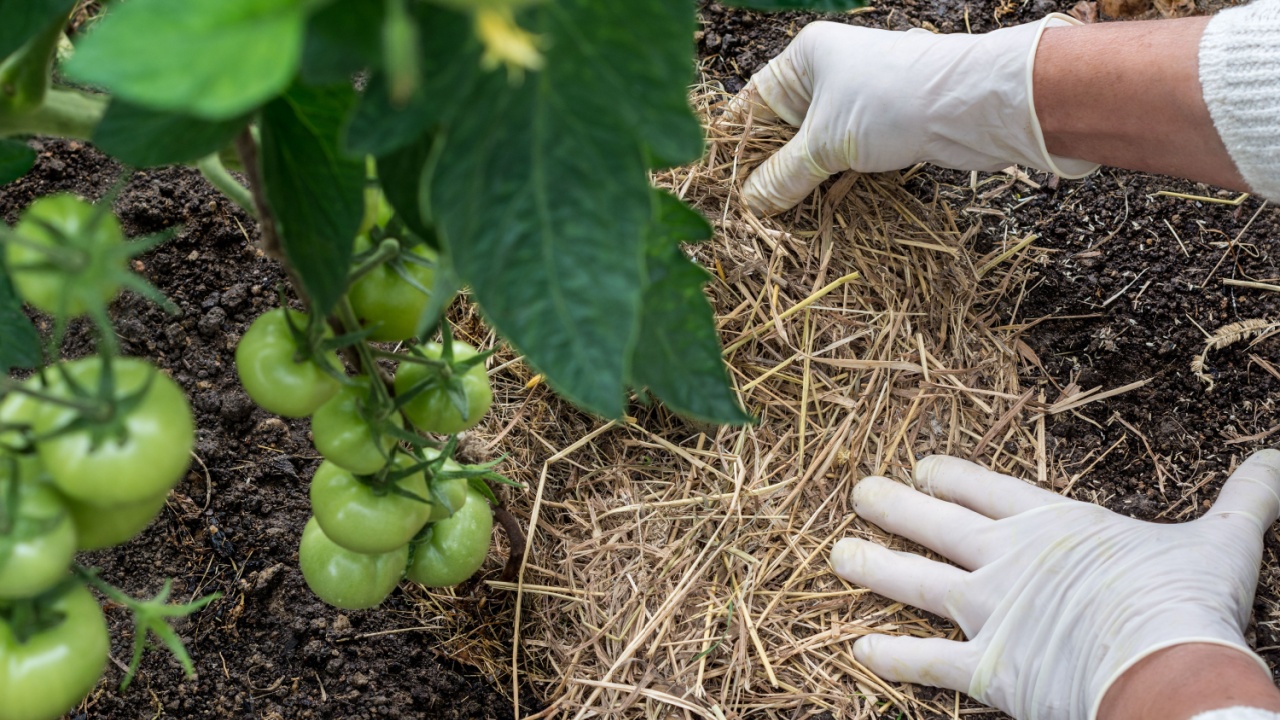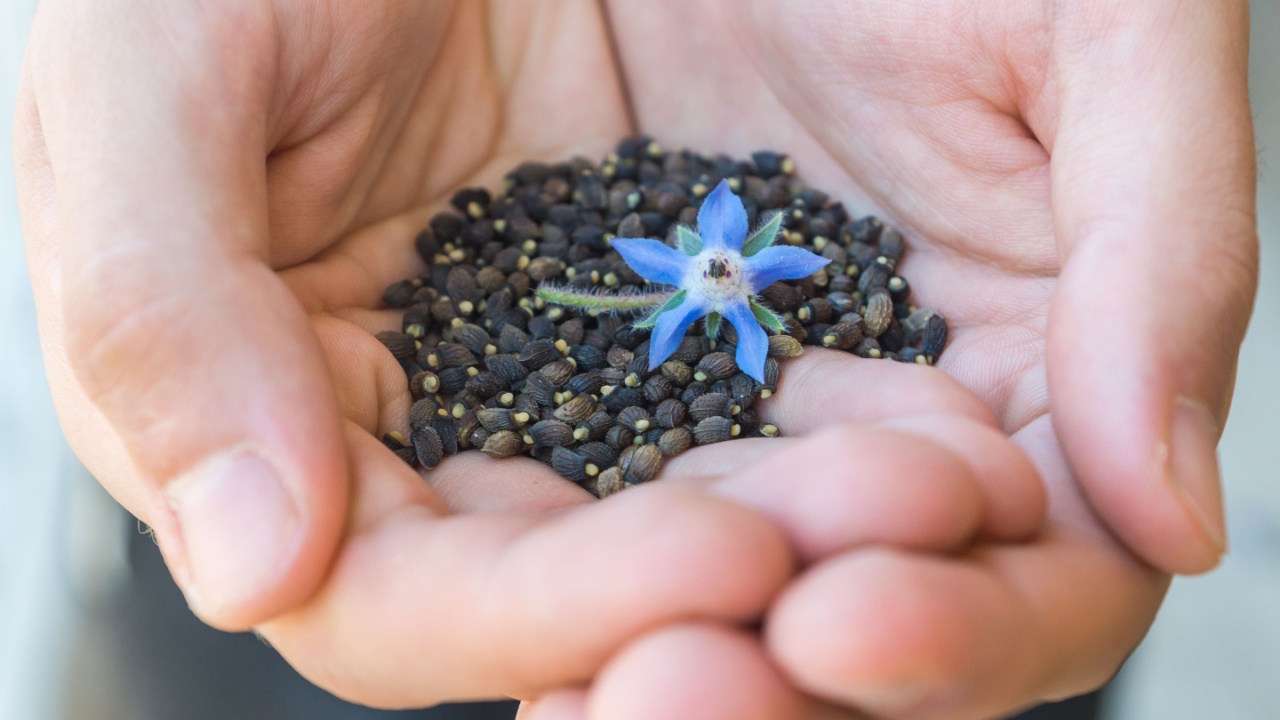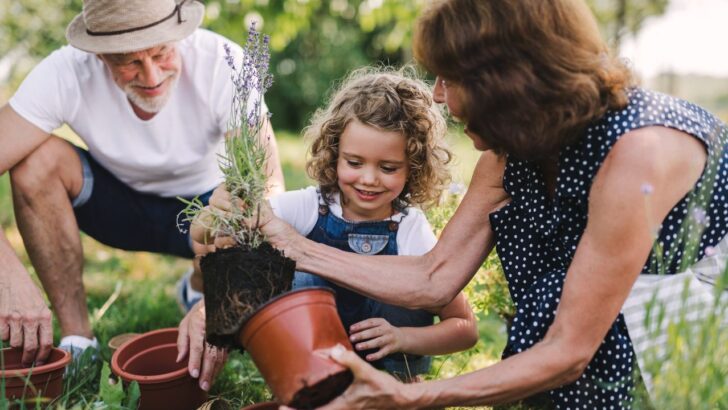Starting a garden can feel overwhelming. There are things to buy, seeds to plant, things to keep watered and alive. Isn’t it easier to buy cucumbers at the grocery store? Not necessarily.
When done right, access to fresh produce right in your backyard (or patio) is easier and cheaper than you think. There’s no need for fancy equipment from a gardening catalog or dropping hundreds of dollars at a plant nursery.
In reality, it can cost almost nothing to get started gardening. And the vegetable yield might even help abate the rising costs of groceries, up an alarming 2.6% in the past 12 months.
If you need an excuse to start a garden despite having zero capital, here’s your sign to do it.
Methodology

Image Credit: Shutterstock.
We spoke to Donna Freedman, a lifelong gardener and pro at being frugal. She grew up in South Jersey, where her family produced enough food to live on year-round. She now lives in Anchorage, Alaska, where the growing season is a challenge but gardening is still possible. She and her partner identify as “low-maintenance preppers.” She loves to preserve vegetables grown in her city backyard, aka an “urban homestead.” Donna received a state grant in 2025 to teach gardening and food preservation to others in the community.
She shares her best tips and favorite resources for gardeners looking to get started with a meaningful plot, regardless of size, on a shoestring budget. Tips will include how to be resourceful in getting started, plus how to promote the best possible yield to maximize your money (and time) investment.
1. Make a Plan

Image Credit: Shutterstock.
No good venture can be started without a plan in place. If you want to garden on a strict budget, having a roadmap will prevent you from panic-buying garden boxes and tomato plants at Costco this spring that totally blow your budget.
Freedman shares, “You can’t just wave a magic wand to get the perfect garden to appear. As a newbie gardener, you need to figure out how much space you have for beds or planters. Draw it on paper if that helps.”
Once you understand how much sun different areas of your property get, you can make meaningful progress toward the garden you’ve always wanted. And this takes zero money, just some thought and a place to jot down your ideas.
Freedman also recommends the Garden Plant Calculator created by Nebraska author Linsey Knerl, whose family grows enough to eat and preserve. Knerl notes that “too many tomatoes is a better problem to have than, say, too many okra.”
2. Seeds vs Starts

Image Credit: Shutterstock.
Want to start a garden on the cheap? Then you should start it primarily from seed (an entire pack usually costs a few bucks), whereas a four-pack of vegetable or flower seedlings could cost anywhere from $3 to $10, and a large, mature solo plant will cost even more.
Freedman shares her pro tip: “Your local dollar store may stock seeds in the spring. Go check!” Your community might also offer options for free seeds at the library. There are also plenty of cheaper seed bundles to purchase online for the cost of one large plant or tree.
While seeding is cheaper, Freedman ultimately recommends a hybrid approach of seeds and greenhouse plants. “Put some lettuce or radish seeds in the dirt as soon as possible. You’ll eat fresh stuff in four to five weeks.
But also plant some four-packs of seedlings: tomatoes, kale, squash, green beans, melons, or whatever you like to eat. It’ll be a couple of months before they’re big enough to eat, but until then, you’ll have those early-bird plants to add joy to your table.”
3. Reduce, Reuse, Repurpose

Image Credit: Shutterstock.
There are so many gimmicks and gadgets claiming to make gardening easier and more enjoyable. Freedman sarcastically wonders how our ancestors survived without Bluetooth plant monitors and an electric weed puller. And don’t even get her started on all the gardening decor (garden gnomes, fairies, and those “You Grow, Girl!” signs).
In reality, our ancestors got scrappy, and so can you. There’s no reason you can’t get creative and repurpose items around your home. This can save so much time and money, plus reduce waste. Need ideas?
Empty sour cream containers are good for starting seeds. So are empty four-packs from last year’s greenhouse purchases. Old lumber can be used to build raised beds. Cut worn-out sheets or shirts into strips for tying up plants. Turn popsicle sticks into plant markers, so you know which seeds went where.”
Freedman shares her own impressive projects: “My partner and I built a small greenhouse out of scrap lumber, old windows, and a couple of discarded storm doors. We make greenhouse trellises with materials like broomsticks and the wire handles from broken hanging baskets. A decades-old chain link dog run keeps moose away from our two small apple trees; my partner just knew he’d find a use for it one day.”
4. Look for Free Stuff

Image Credit: Susan Kehoe / Shutterstock.
Freedman shares how her family was resourceful growing up. “My grandfather didn’t want to pay cash for bean poles, so he occasionally got permission to cut down saplings from a friend’s wooded property.” Whether it’s asking for seeds, plants, or materials- it’s amazing what people will give away for free.
Where to start? The Buy Nothing Project created a series of Facebook groups. Local group members have given or requested flowerpots, tools, plants (even trees!), paving stones, fertilizer, soil, and seeds. Use the link to find your local group, then watch for things you need – or post an “ask.”
The NextDoor social platform has a “free finds” section. Someone on your block may want to get rid of some garden tools or a big bag of potting soil. Craigslist and Freecycle aren’t what they used to be, but you might still be lucky enough to find some of your needs.
5. Plant in “Waves”

Image Credit: Deposit Photos.
Now that you have all the free (or dirt cheap) stuff you need to get started, it’s time to change your focus to a thriving functional garden. Planting in waves is a great start.
If you plant all your lettuce seeds at the same time, you’ll be drowning in salad four to six weeks later. Instead, plant one row per week. The same holds for kale, spinach, and other healthy (and delicious) greens. This will maximize your plant yield without getting sick of (or not having time to preserve) the produce you worked so hard to grow.
Those with reliably long, hot summers can succession-plant tomatoes, peppers, green beans, squash, or any vegetable they like to eat. That way, they won’t eat eggplant three times a week for two months or leave bags of zucchini on people’s doorsteps.
Freedman shares, “My cousin in South Jersey gets fresh peas in late spring and another crop in mid-autumn.” In the end, having a steady supply vs. a glut reduces the chances your hard work will literally rot on the vine because you can’t eat it all. That’s your money going down the drain!
6. Protect Your Plants

Image Credit: Shutterstock.
Protecting your garden and maximizing your veggie yield with the right protection is the key to getting the most bang for your garden buck. Insects and animals see your garden as a never-ending salad bar. Keeping them from chowing down on your chard can feel like a constant battle – and it can be. Never give up! This food is for you to eat, preserve, and share, not to feed a bunch of opportunistic woodchucks and tomato hornworms.
Freedman shares her favorite non-toxic plant protection tips below:
- Consider companion planting. Some flowers and herbs are natural pest repellents. For example, the scent of marigolds drives away aphids, mosquitoes, and other insects. Other fragrant options include mint, basil, and chrysanthemums.
- Put out netting. Drape plant netting over berry vines and fruit trees to keep away birds, rabbits, and deer.
- Make a go-away spray. My grandparents grew and dried chili peppers—not for cooking but to mix with water and spray on garden plants and fruit trees. While you can buy insecticidal soap solutions to kill aphids, making your own is easy.
- Hair can scare. My grandfather collected floor sweepings from a local barber and worn-out pantyhose from my grandmother’s friends. He hung the hair-filled nylons from poles to frighten off the deer. The animals – and there are a lot of them in the region – left their garden strictly alone.
7. Make Compost

Image Credit: Shutterstock.
Why buy fertilizer when you can make your own? This makes for yet another big money saver. Freedman writes, “Kitchen waste and yard waste can be combined to make an excellent soil enhancer. If your yard has space for a compost pile or box, you’ll mix kitchen scraps and grass clippings with things like dead leaves, sawdust, newspaper, or straw. Some turning and watering may be required unless you’re doing passive or “cold” composting.”
Are you short on yard space or simply not interested in stirring and mixing? Freedman recommends trying “vermicomposting,” or feeding kitchen waste to worms that live in a small, closed bin. BobVila.com offers instructions for both kinds of composting. Alternatively, some cities have composting programs. You drop off your kitchen scraps and get a bucket of compost in return. Check to see if your town offers this service.
8. Mulch Your Garden

Image Credit: Shutterstock.
A layer of mulch helps conserve moisture in the soil, so you won’t have to water as often. It also helps keep weeds down. Both are good things! If your water is metered, you’ll appreciate the savings.
Freedman points out a huge money saver here, often hiding in plain sight in our yards. “You don’t need to buy mulch, though. Grass clippings make a fine cover for your vegetable garden. Shredded dried leaves or pine straw also work well and may be free.” The National Gardening Association offers mulching tips for beginners.
9. Save Seeds

Image Credit: Shutterstock.
Freedman agrees that saving seeds is a no-brainer part of gardening on the cheap. “My partner and I buy certain seeds fresh each year. But we also save some: marigolds, columbine, several varieties of Asian greens, and two kinds of tomatoes that grow well in Alaska. The more seeds you save, the fewer you need to buy. It’s basic math.”
Saving seeds isn’t difficult once you know what you’re doing. Oregon State University’s Extension Service has a step-by-step guide for home gardeners who want to keep their favorite varieties from year to year. You can also swap seeds with your neighbors, so Freedman recommends saving enough seeds to share.
10. Preserve the Harvest

Image Credit: Shutterstock.
Now that you have a killer harvest, it’s time to preserve all that money saved and food grown to enjoy all year long.
An essential resource is the National Center for Home Food Preservation (NCHFP) at the University of Georgia. The NCHFP offers user-friendly instructions on freezing, canning, pickling, drying, fermenting, smoking, and curing foods. But Freedman is quick to note, “It’s not necessary to spend hundreds on food preservation equipment.”
She shares preservation methods can be as simple as a water-bath canner and DIY jar rack. Don’t be afraid to borrow a pressure canner from a friend, family member, or neighbor (or hit up the Buy Nothing group). Additionally, some public libraries lend food preservation equipment.
You can also try the simplest (and oldest) form of food preservation: drying. You can use a home dehydrator, solar racks, or an oven. Again, your local library might have a dehydrator to loan; if not, these appliances can cost as little as $50 and don’t require much energy to run.
Freedman loves the process of stocking her cellar and feeling ready for whatever may come, all on a budget to boot. “My partner and I dehydrate greens, strawberries, potatoes, raspberries, and sugared rhubarb stalks. A new project has been making “green powder” from a mix of those dehydrated green. This is a fun way to use the leaves of carrots, pumpkins, cucumbers, and other produce, and the result is a healthy addition to smoothies, soups, and meatloaf.”
Ultimately, don’t let budget or lack of “supplies” get in the way of starting a thriving garden. Freedman is proof that you can do it on the cheap and still get all the glorious outcomes.


